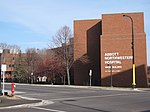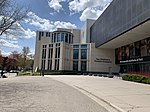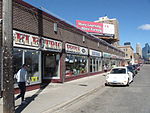Harrington Mansion and Events Center
The Harrington Mansion and Events Center is a historic property located at 2540 Park Avenue in Minneapolis, Minnesota, United States. The estate was built in 1902 for the family of Charles Harrington, who oversaw the Minneapolis office for the Van Dusen-Harrington Company, which specialized in grain processing and distribution. The Harrington Mansion and Events Center was purchased by Saint Mary's University of Minnesota in 2011, as the newest addition to Saint Mary's Minneapolis campus. The estate was previously owned by the Zuhrah Shrine, which bought the property from the Harrington family in 1929. The Harrington Mansion and Events Center, with a historic mansion, carriage house, modern events center, and 124 parking spaces, encompasses 1.66 acres in South Minneapolis. The historic mansion and carriage house cover 30,000 square feet, and the events center, built in 1990, contains 54,000 square feet.
Excerpt from the Wikipedia article Harrington Mansion and Events Center (License: CC BY-SA 3.0, Authors).Harrington Mansion and Events Center
Oakland Avenue South, Minneapolis
Geographical coordinates (GPS) Address Nearby Places Show on map
Geographical coordinates (GPS)
| Latitude | Longitude |
|---|---|
| N 44.955944444444 ° | E -93.265833333333 ° |
Address
Oakland Avenue South 2418
55407 Minneapolis
Minnesota, United States
Open on Google Maps








